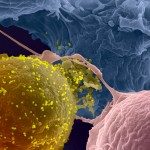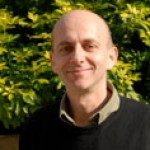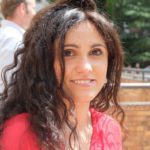Lien vers Pubmed [PMID] – 26865710
Lien DOI – 10.1128/JVI.03202-15
J Virol 2016 Apr; 90(8): 4199-4214
In a previous screen of putative interferon-stimulated genes, SUN2 was shown to inhibit HIV-1 infection in an uncharacterized manner. SUN2 is an inner nuclear membrane protein belonging to the linker of nucleoskeleton and cytoskeleton complex. We have analyzed here the role of SUN2 in HIV infection. We report that in contrast to what was initially thought, SUN2 is not induced by type I interferon, and that SUN2 silencing does not modulate HIV infection. However, SUN2 overexpression in cell lines and in primary monocyte-derived dendritic cells inhibits the replication of HIV but not murine leukemia virus or chikungunya virus. We identified HIV-1 and HIV-2 strains that are unaffected by SUN2, suggesting that the effect is specific to particular viral components or cofactors. Intriguingly, SUN2 overexpression induces a multilobular flower-like nuclear shape that does not impact cell viability and is similar to that of cells isolated from patients with HTLV-I-associated adult T-cell leukemia or with progeria. Nuclear shape changes and HIV inhibition both mapped to the nucleoplasmic domain of SUN2 that interacts with the nuclear lamina. This block to HIV replication occurs between reverse transcription and nuclear entry, and passaging experiments selected for a single-amino-acid change in capsid (CA) that leads to resistance to overexpressed SUN2. Furthermore, using chemical inhibition or silencing of cyclophilin A (CypA), as well as CA mutant viruses, we implicated CypA in the SUN2-imposed block to HIV infection. Our results demonstrate that SUN2 overexpression perturbs both nuclear shape and early events of HIV infection.Cells encode proteins that interfere with viral replication, a number of which have been identified in overexpression screens. SUN2 is a nuclear membrane protein that was shown to inhibit HIV infection in such a screen, but how it blocked HIV infection was not known. We show that SUN2 overexpression blocks the infection of certain strains of HIV before nuclear entry. Mutation of the viral capsid protein yielded SUN2-resistant HIV. Additionally, the inhibition of HIV infection by SUN2 involves cyclophilin A, a protein that binds the HIV capsid and directs subsequent steps of infection. We also found that SUN2 overexpression substantially changes the shape of the cell’s nucleus, resulting in many flower-like nuclei. Both HIV inhibition and deformation of nuclear shape required the domain of SUN2 that interacts with the nuclear lamina. Our results demonstrate that SUN2 interferes with HIV infection and highlight novel links between nuclear shape and viral infection.



